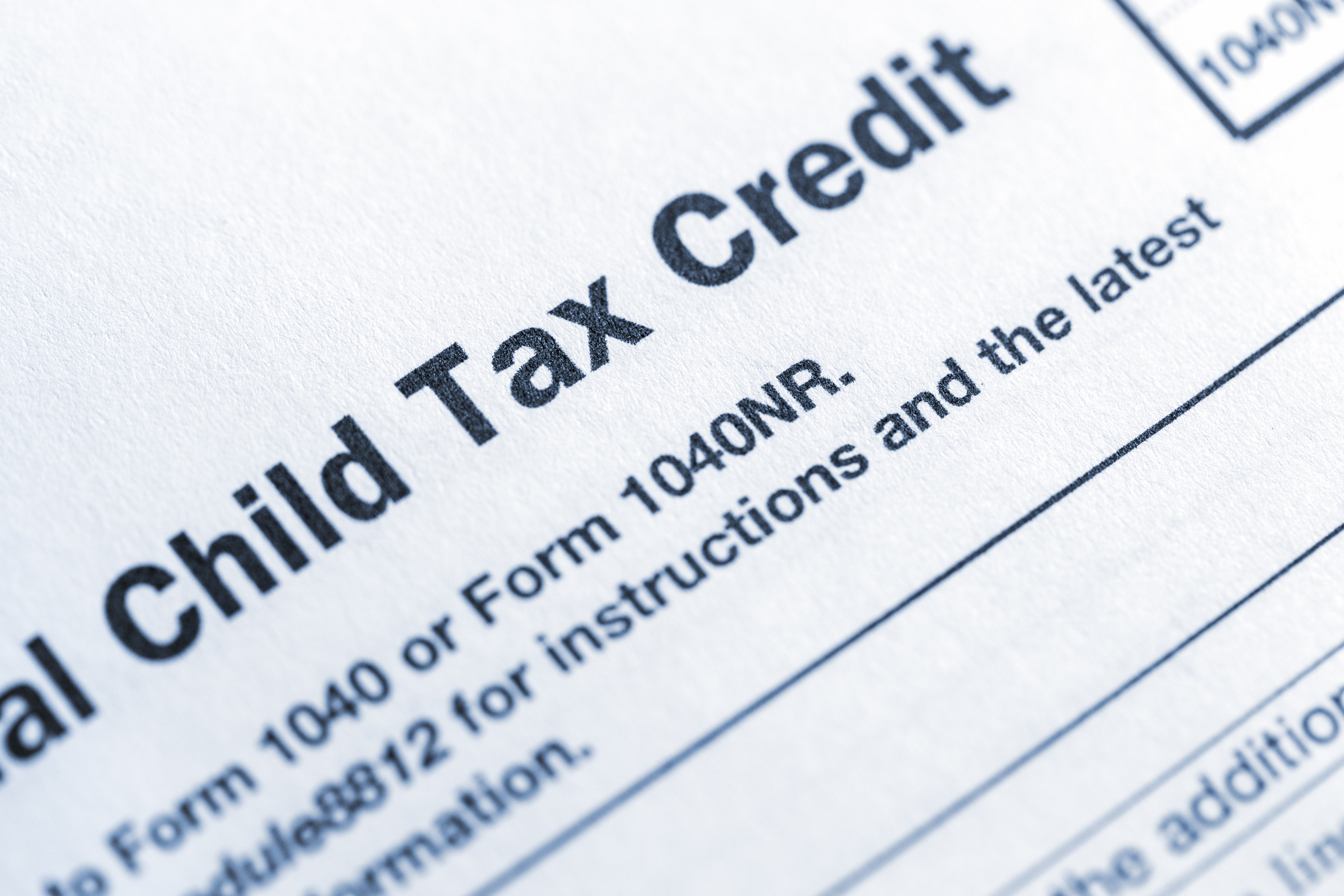The Extra Standard Deduction for People Age 65 and Older
The extra standard deduction can help older adults reduce their taxable income. Here's how.


You’ve probably heard about the standard deduction, but did you know that the tax code offers a perk in the form of an extra standard deduction for people aged 65 or older?
For eligible older adult filers, the additional deduction stacks on the regular standard deduction and can further reduce taxable income. That, in turn, can increase the amount of hard-earned money you keep in retirement.
Here’s more of what you need to know, including some potential changes to the deduction that could come from Congress.
From just $107.88 $24.99 for Kiplinger Personal Finance
Be a smarter, better informed investor.

Sign up for Kiplinger’s Free Newsletters
Profit and prosper with the best of expert advice on investing, taxes, retirement, personal finance and more - straight to your e-mail.
Profit and prosper with the best of expert advice - straight to your e-mail.
Key points
- Taxpayers 65 and older qualify for an additional standard deduction, reducing their taxable income.
- The extra deduction amount differs based on filing status and whether the taxpayer or spouse is blind.
- The IRS updates the deduction amounts annually for inflation, impacting tax filings.
- Eligible older adults can add the extra deduction to their regular standard deduction when filing taxes, potentially lowering their overall tax bill.
Overview
What’s the standard deduction?
Before delving into specifics about the extra standard deduction for older adults aged 65 and older, reviewing how the regular standard deduction works is helpful.
The standard deduction is a predetermined amount that reduces your taxable income, lowering the income subject to tax. In most cases, whether to take the standard deduction (which most taxpayers choose to do) is up to you. (However, some taxpayers cannot claim the standard deduction.)
The alternative is to itemize deductions, which involves claiming individual deductions on your federal income tax return. Common itemized deductions include things like mortgage interest and charitable donations.
The amount of your standard deduction depends on several different factors. For example:
- Your filing status
- Whether you are 65 or older
- Whether you are blind
- Whether another taxpayer can claim you as a dependent on their tax return
For 2025 (tax returns typically filed by April 2026), the standard deduction amounts are $15,000 for single and for those who are married, filing separately; $30,000 for those married filing jointly and qualified widowers; and $22,500 for head of household.
For more on the standard deduction, see: What’s the 2025 Standard Deduction?
IRS extra standard deduction for older adults

When you turn 65, you become eligible for an additional standard deduction on top of the regular standard deduction.
However, the amount of this extra deduction can vary based on factors like filing status and whether you or your spouse are 65 or older. Whether you or your spouse is blind is another factor.
- For 2025, the additional standard deduction is $2,000 if you are single or file as head of household.
- If you're married, filing jointly or separately, the extra standard deduction amount is $1,600 per qualifying individual.
Note: Last tax year (2024, returns filed typically by April 15, 2025), the additional standard deduction was $1,950 (single or filing as head of household). If you're married, filing jointly or separately, the extra standard deduction amount was $1,550 per qualifying individual. (More on that below)
If you are 65 or older and blind, the extra standard deduction for 2024 was $3,900 if you are single or filing as head of household. It's $3,100 per qualifying individual if you are married, filing jointly or separately.
For 2025, those amounts are $4,000 and $3,200, respectively.
2025 Extra Standard Deduction
Additional standard deduction 2025
Here are the IRS extra standard deduction amounts for 2025. (You'll use these numbers for tax returns typically filed in early 2026.)
Also, for more detailed information on the current amounts, see Tax Deduction Change for Those Over Age 65.
65 or older or blind | $2,000 |
65 or older and blind | $4,000 |
65 or older or blind | $1,600 per qualifying individual |
65 or older and blind | $3,200 per qualifying individual |
Note: For the additional standard deduction for people who are blind, you have to be completely blind by the end of a given tax year.
Or, you have to have a doctor's certification (in this case, an ophthalmologist or optometrist) that your eyesight is at least 20/200 (in the best eye with corrective lenses.)
Or, your doctor must certify that your field of vision is 20 degrees or less.
2024 Amounts
If you haven't filed your 2024 federal income tax return yet, the additional standard deduction amount for 2024 (returns usually filed in early 2025) was $1,550 ($1,950 if unmarried and not a surviving spouse). See the charts below.
65 or older or blind | $1,950 |
65 or older and blind | $3,900 |
65 or older or blind | $1,550 per qualifying individual |
65 or older and blind | $3,100 per qualifying individual |
Remember: For the additional standard deduction for people who are blind, you have to be completely blind by the end of a given tax year.
Or, you have to have a doctor's certification (in this case, an ophthalmologist or optometrist) that your eyesight is at least 20/200 (in the best eye with corrective lenses).
Or, your doctor must certify that your field of vision is 20 degrees or less.
Claiming the extra standard deduction
As retirees tend to face rising medical and other expenses, the extra standard deduction for individuals 65 and older can help alleviate tax burdens by reducing taxable income. This boost may free up funds for essential needs, leisure activities, or to support loved ones.
If you are eligible to claim the extra standard deduction and aren’t sure how it impacts your tax liability, consult a trusted tax professional or official IRS resources to maximize your tax benefits.
Extra standard deduction vs. itemizing: Which is better?
There's no one-size-fits-all answer when deciding between taking the extra standard deduction and itemizing. The best choice depends on your financial situation and the specific tax credits and deductions you qualify for.
The extra standard deduction for those 65 and older can be a straightforward way to reduce taxable income without extensive record-keeping. This option might be particularly attractive for those who don't have substantial itemizable expenses or prefer a simpler tax filing process.
On the other hand, itemizing can be more beneficial if your qualifying expenses exceed the combined standard and extra standard deductions.
Common itemized deductions include medical expenses, mortgage interest, charitable contributions, and state and local taxes. If you have high medical costs or make substantial charitable donations, itemizing might result in greater tax savings.
However, itemizing requires strong record-keeping and sometimes complex tax preparation. Evaluate both options (with help from a trusted advisor if needed) and choose the one that lowers your tax liability the most.
The 'Big Beautiful Bill'
Trump tax plan 2025: Changes to the over 65 deduction
Trump’s newly signed "One Big Beautiful Bill" (OBBB) contains a new “bonus” standard deduction for those age 65 and older.
The "bonus" will provide an additional reduction in taxable income for eligible older adults — up to $6,000 in the Senate version — on top of the existing extra standard deduction already available, subject to phase-outs at higher incomes.
GOP lawmakers say the goal is to ease the financial burden on retirees, many of whom have seen their savings stretched by inflation, by putting more money back in their pockets at tax time.
However, as Kiplinger has reported, the deduction boost comes with caveats.
- It is a temporary measure, effective only from 2025 through 2028, and is subject to income limits.
- The full benefit phases out at a rate of 6% for every dollar above the following: for single filers with a modified adjusted gross income (MAGI) above $75,000 and for joint filers with a modified adjusted gross income above $150,000. It completely phases out at $175,000 (single filers) and $250,000 (joint).
- While this targeted relief could make a difference for older adults with middle incomes, those with lower incomes who pay little or no federal income tax may see limited benefits, since deductions only reduce taxable income rather than directly lowering the tax bill. Those with high incomes may not be eligible for relief.
President Trump signed the OBBB into law on July 4.
This article has been updated to include information about GOP changes as to how the extra standard deduction works.
Related
Profit and prosper with the best of Kiplinger's advice on investing, taxes, retirement, personal finance and much more. Delivered daily. Enter your email in the box and click Sign Me Up.

As the senior tax editor at Kiplinger.com, Kelley R. Taylor simplifies federal and state tax information, news, and developments to help empower readers. Kelley has over two decades of experience advising on and covering education, law, finance, and tax as a corporate attorney and business journalist.
-
 Standard Deduction 2025 Quiz: How Much Do You Really Know?
Standard Deduction 2025 Quiz: How Much Do You Really Know?Quiz Test your knowledge of IRS rules that impact how much money you keep in your wallet.
-
 StubHub IPO: Should You Buy STUB Stock?
StubHub IPO: Should You Buy STUB Stock?The highly anticipated StubHub IPO is right on our doorstep, with the online ticket marketplace expected to start trading later this month.
-
 Standard Deduction 2025 Quiz: How Much Do You Really Know?
Standard Deduction 2025 Quiz: How Much Do You Really Know?Quiz Test your knowledge of IRS rules that impact how much money you keep in your wallet.
-
 New Bill Would End Taxes on Social Security Benefits in 2026: What Retirees Should Know
New Bill Would End Taxes on Social Security Benefits in 2026: What Retirees Should KnowTax Law Congress could look to high earners to help offset lost revenue and possibly shore up the Social Security program.
-
 New $6,000 'Senior Bonus' Deduction: What It Means for Taxpayers Age 65-Plus
New $6,000 'Senior Bonus' Deduction: What It Means for Taxpayers Age 65-PlusTax Changes If you’re an older adult, a new bonus tax deduction could provide a valuable tax benefit. Here's how it works.
-
 Claiming the Standard Deduction? Here Are 10 Tax Breaks For Middle-Class Families in 2025
Claiming the Standard Deduction? Here Are 10 Tax Breaks For Middle-Class Families in 2025Tax Breaks Working middle-income Americans won’t need to itemize to claim these tax deductions and credits — if you qualify.
-
 Over Age 65? New $6,000 'Senior Bonus' Deduction Is Available Even If You Itemize
Over Age 65? New $6,000 'Senior Bonus' Deduction Is Available Even If You ItemizeTax Changes If you’re an older adult, a new bonus tax deduction could provide a valuable tax benefit. Here's how it works.
-
 New Trump Tax Bill: Five Changes Homeowners Need to Know Now
New Trump Tax Bill: Five Changes Homeowners Need to Know NowTax Changes Trump’s new tax legislation is reshaping how tax breaks for homeowners work.
-
 How the 2025 Child Tax Credit Rules Impact Single Parents
How the 2025 Child Tax Credit Rules Impact Single ParentsTax Credits New changes to family tax credits, like the Child Tax Credit, will impact the eligibility of some households.
-
 How Your 2025 Wedding Could Save You Money on Taxes
How Your 2025 Wedding Could Save You Money on TaxesTax Breaks There are some wedding expenses that are tax-deductible, and you don’t want to miss out on savings.